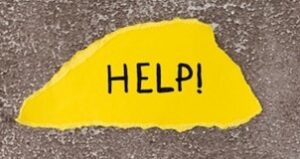I vacillated between despair and hope. I put my trust in the highly-esteemed oncologists that they would cure my daughter.–JG
Most would agree that having a child with a medical crisis and/or chronic health condition is our worst nightmare. Through all the pain and worry about our child, marital relationships can be negatively impacted, making our experiences even more difficult. One study showed that parents who have a child with a chronic health condition more often experience marital dissatisfaction and depressive symptoms than do other couples.[1]
On the other hand, I know of couples who have children with a chronic illness or have died, and the trauma strengthened their relationship. Each one knew that the partner was the only one who truly understood their feelings and experienced.
Being a parent involves multiple roles during a normal day, let alone when our child is in need. Parenting styles vary. Some parents feel compelled to take care of the child, regardless of their age. During this time, the protective parent wants to gather information so decisions can be made. Relationships with our other children, partner, and friends lessen in priority. Work feels like a roadblock to solving and helping. Nothing is more important than making your child well and safe again. Other parents in grief and sadness tend to take a step back, leaning on professionals.
During my son’s treatment, I tried to think positively and that my son would be cured. I prayed and held onto hope, even when there wasn’t any hope.–LVB
[Having a chronically ill or death of a child] creates a loss of all the hopes, dreams, and preconceived anticipations we had for our son.–RR
The complexity and enormity of having a seriously ill child is conveyed in Robin’s journey. Her healthy 3-year-old son started vomiting, and the next day was unable to move.
Robin’s Experience Mommy, Help Me
Carter was a full-term, uncomplicated pregnancy. He was fully vaccinated, and until July 31st, 2016, was “typical” for any healthy 3 ½ year old. On Friday, July 29th, Carter vomited after eating pizza. The next morning, he woke up early and wanted water. He chugged his water and I gave him a couple crackers to ensure things would “stay down.” Everything was fine and I thought the vomiting was a one and done. I was happy he was staying hydrated and eating some during the day. He fell asleep a little early Saturday and my husband carried him to bed.
 The next morning at 8:00 a.m., I woke up to find him on the floor in his room, saying, “Mommy help me, Mommy help me.” I scooped him up. He couldn’t hold his head up, his right arm was limp at the elbow and shoulder, and his legs seemed a bit weak. We took him to our local pediatric ER. The docs suspected a possible stroke or meningitis. They did a CT, MRI without contrast, and spinal tap. The spinal tap had alarming results and they moved him to the PICU. The lack of movement in his right arm remained unexplained. They started fluids and antibiotics while running other tests to rule out what felt like a million things.
The next morning at 8:00 a.m., I woke up to find him on the floor in his room, saying, “Mommy help me, Mommy help me.” I scooped him up. He couldn’t hold his head up, his right arm was limp at the elbow and shoulder, and his legs seemed a bit weak. We took him to our local pediatric ER. The docs suspected a possible stroke or meningitis. They did a CT, MRI without contrast, and spinal tap. The spinal tap had alarming results and they moved him to the PICU. The lack of movement in his right arm remained unexplained. They started fluids and antibiotics while running other tests to rule out what felt like a million things.
 My husband came to stay the night at around 11 p.m., and while Carter still couldn’t use his arm, he seemed a bit better. I felt restless all night and got up early to go back to the ER. I walked in at about 6:00 a.m. and watched in horror as a physician and two nurses tried to intubate Carter because he became unresponsive and stopped breathing.
My husband came to stay the night at around 11 p.m., and while Carter still couldn’t use his arm, he seemed a bit better. I felt restless all night and got up early to go back to the ER. I walked in at about 6:00 a.m. and watched in horror as a physician and two nurses tried to intubate Carter because he became unresponsive and stopped breathing.
Over the next 48 hours, there were tons of tests. Carter coded twice and we still had no answers; all the while, his ability to respond or move worsened to the point that he had no reflexes anywhere in his body and his eyes were fixed. Unable to wait any longer due to respiratory and pulmonary complications, we went back to the MRI for a full scan on Day 5. We were told our son had something called ADEM: Acute Disseminated Encephalomyelitis, where the body attacks the myelin of its nerves. Nearly 80% of kids make a full recovery.
They started steroids for four days. Little changed. A second MRI of the spine was done. This time it showed damaged gray matter in his brain stem and spine that led to a different diagnosis of Acute Flaccid Myelitis, or AFM. This was significant because not only is it rare, but there is no way to treat or repair it. You only get gray matter as a neonate. There are no drugs, stem cells, or therapies that fix this.
It took multiple MRIs and many days to reach a correct diagnosis. I immediately began second-guessing the hospital I had gone to, the doctors we were working with, and time that may have been unnecessarily lost.
For two years, Carter received what is called “supportive care.” These are things that allowed him to sustain life and be as comfortable as possible, given his illness and physical impairments, but nothing that would fix or cure the diagnosis and its domino effect of complications. Supportive care includes physical therapy, occupational therapy, music therapy, and enrollment with a palliative care organization that helped Carter and our entire family with different things.
 Throughout these two years, my emotions have been a roller coaster. In the beginning, I was in a mental panic. There is no known cause (etiology) or cure for AFM, and seeing two pages of Google results was extremely disheartening. It was emotionally consuming and numbing all at the same time. I felt hopeless and confused that this seemingly improbable thing was affecting Carter and our family so intensely.
Throughout these two years, my emotions have been a roller coaster. In the beginning, I was in a mental panic. There is no known cause (etiology) or cure for AFM, and seeing two pages of Google results was extremely disheartening. It was emotionally consuming and numbing all at the same time. I felt hopeless and confused that this seemingly improbable thing was affecting Carter and our family so intensely.
During his hospital stay, sadness, and feeling overwhelmed took center stage. Those feelings were temporarily disrupted by bursts of hope when speaking with other people — physicians, nurses, chaplains and therapists — in the first several weeks. I obsessed on the idea that a solution must be possible. I work in healthcare, and spent hours contacting companies, the NIH, and different physicians to ask about trials that could connect to our son’s rare disease.
What happened was beyond basic logic or cause and effect and surpassed anyone’s understanding. I questioned every decision and every moment of the days leading up to his sudden onset of symptoms, trying to pinpoint what could have happened. I longed to understand the reasons it happened and how to fix it, believing that if I tried hard enough, there must be a solution.
 Medical treatment (all based on empirical evidence) failed. Medications that helped others and months in an out-of-state intense inpatient rehab, which was so terribly hard on the entire family, failed. During rehab, we stumbled on families with the same diagnosis in a private social media group that reported success and improvements. While happy for other families and their kiddos, feelings of resentment and “why us” began. We were working so hard with all the same therapists, facilities, modalities, and specialists, but there was no change. Carter did not improve or “get better” at all. Sadness crept back in in the weeks before rehab discharge, and then grief started — not for death, but for the death of all the hopes, dreams, and pre-conceived ideas or anticipations we had for our son.
Medical treatment (all based on empirical evidence) failed. Medications that helped others and months in an out-of-state intense inpatient rehab, which was so terribly hard on the entire family, failed. During rehab, we stumbled on families with the same diagnosis in a private social media group that reported success and improvements. While happy for other families and their kiddos, feelings of resentment and “why us” began. We were working so hard with all the same therapists, facilities, modalities, and specialists, but there was no change. Carter did not improve or “get better” at all. Sadness crept back in in the weeks before rehab discharge, and then grief started — not for death, but for the death of all the hopes, dreams, and pre-conceived ideas or anticipations we had for our son.
The term “new normal” that people uttered was angering. I wanted the old normal. Based on everything I had done and controlled prior to his illness, I felt as a parent I was owed that.
Now, Carter is dependent on a ventilator and not strong or able to care for himself in the least. While trying to make the most of every day, fear lingers from the moment I wake until I close my eyes for a shift for the worse, new complications, or an episode of respiratory distress I won’t be able to resolve before EMS arrives. A common cold takes weeks and weeks to clear. I have more monthly insurance fights, therapy appointments, and medical visits than cups of coffee I drink in a month.
I feel like a failure as a Mom and spouse for not taking better care or paying enough attention to my two daughters and husband. I reflect on that failure prior to bed every night, wondering what I missed or what I put off. Sleep and personal coping suffer daily. I question my ability to sustain this journey and wonder what would happen in my absence. The persistence and evolution of feelings is easy to bear when I am immersed in the never-ending list of daily tasks of caring for Carter. That is what I can do to help him.
Two years after Carter vomited, he passed away. Carter’s mother is an advocate for needed funding and finding a cure for this horrible disease. She lobbied at Capitol Hill alongside senators and physicians, representing her family and others who experience Acute Flaccid Myelitis (AFM). To learn more about AFM and/or to donate, go to https://www.afmanow.org/
What Others Can Do
The illness or loss of a child, regardless of how old the child is, creates anxiety in others because people quickly personalize the situation. When hearing of the illness or death, we, as parents, move to that space, “What if it were my child?” This personalization happens more with the illness or loss of a child than with any other medical crisis. The vulnerability of a child and parent relationship and our desire/need to protect them strikes us at our core.
 Much of the time, people don’t know what to do for the parents undergoing their child’s medical crisis. The MOST important thing to do is to acknowledge what is happening. Ignoring what is occurring and acting as if everything is as usual only makes the family feel isolated.
Much of the time, people don’t know what to do for the parents undergoing their child’s medical crisis. The MOST important thing to do is to acknowledge what is happening. Ignoring what is occurring and acting as if everything is as usual only makes the family feel isolated.
- Practical Help Offer practical help, for example, carpooling other children, dropping off meals, making lunches for children to take to school, doing their laundry, making a playdate for younger children, inviting children over for dinner, or mowing the grass are some practical ways to assist the family.
- Organizing Thinking through daily needs is exhausting when much of our time is spent caring for our child and managing their care. Therefore, having someone willing to organize weekly needs (e.g., meal train, carpools, care of home) is a significant help.
- Create a list In our culture, we are quick to react when asked how someone can help, as “We’re okay” pops out. Therefore, when offering help make a list of what you can do and/or find others to do. Giving your friend a list to check off the items they need reduces the awkward feeling some get when asking for and accepting help.
- Help grandparents Sometimes family members come to help out, particularly grandparents. It is important to help them out too, as they have taken on two roles of supporting their adult child and the grandchildren.
As there are suggestions of what to do, there are suggestions of what not to do.
- Don’t pepper the parents with questions. They will share what they want. Offering a listening ear is just that, being a listener.
- Don’t offer advice unless specifically asked, and then tread carefully unless you have a specific expertise.
- Don’t question their decisions. There is enough uncertainty not to have yours piled onto theirs.
Resources for Coping with an Ill Child
Robin shared the vast array of emotions that can be experienced when your child is ill. Guilt, responsibility, hope, hopelessness, frustration, anger, and sadness intertwine in a complex mix. Counseling is helpful to sort through the challenges that you face, but I recommend you work with a therapist who specializes in trauma, illness, or the like. These times call for experts who are trained to help in such situations.
The Wonders and Worries website offers important information.[2] Going to the developmental stages tab gives caregivers a deeper understanding of how the child’s age impacts their behavior.[3]
Here 4 You is an organization to support parents of medically complex children and offers links to helpful sites.[4]
Band-Aides and Blackboards is a fun, interactive website for kids and teens growing up with medical issues.[5]
The Experience Journals are a collection of stories for children and teens living with physical or emotional illness.[6]
KidsHealth offers online information about child health, behavior, and development for kids and adolescents.[7]
Starbright World® is an online social network for seriously ill teens and their teen-aged siblings.[8]
Parents can learn how to use distraction techniques to help children during medical procedures in Distraction in Action videos.[9]
Healthychildren.org has a good article on dealing with your own feelings.[10]
“How to Help a Child With Chronic Illness: Tips from a child life specialist,” by Andy Kryza, offers practical suggestions on how to manage.[11]
This “Caring for a Seriously Ill Child” article has clear advice on how to talk with a child about their illness, as well as sections about siblings and yourself.[12]
How to Go On Living When Someone You Love Dies, by Therese A. Rando, has a section on dealing with the loss of a parent and other useful information.[13]
[1] Berge, J. M., Patterson, J. M., & Rueter, M. (2006). Marital satisfaction and mental health of couples with children with chronic health conditions. Families, Systems, & Health, 24(3), 267-285. doi:10.1037/1091-7527.24.3.267
[2] https://www.wondersandworries.org/for-parents/
[3] https://www.wondersandworries.org/child-developmental-stages/
[4] http://www.here4u.net/resources.html
[5] http://www.lehman.cuny.edu/faculty/jfleitas/bandaides/
[6] https://experiencejournal.com/
[7] https://kidshealth.org/en/parents/general/
[8] http://www.tamikothiel.com/starbright/
[9] https://uichildrens.org/distraction-in-action
[10] https://www.healthychildren.org/English/health-issues/conditions/chronic/Pages/Dealing-With-Your-Own-Feelings.aspx
[11] https://www.fatherly.com/parenting/raising-kids-chronic-illness-child-life-specialist/
[12] https://kidshealth.org/en/parents/seriously-ill.html
[13] Rando, T. A. (1991). How to go on living when someone you love dies. New York: Bantam Books.
Featured image courtesy of CDD20 on Pixabay.

0 Comments